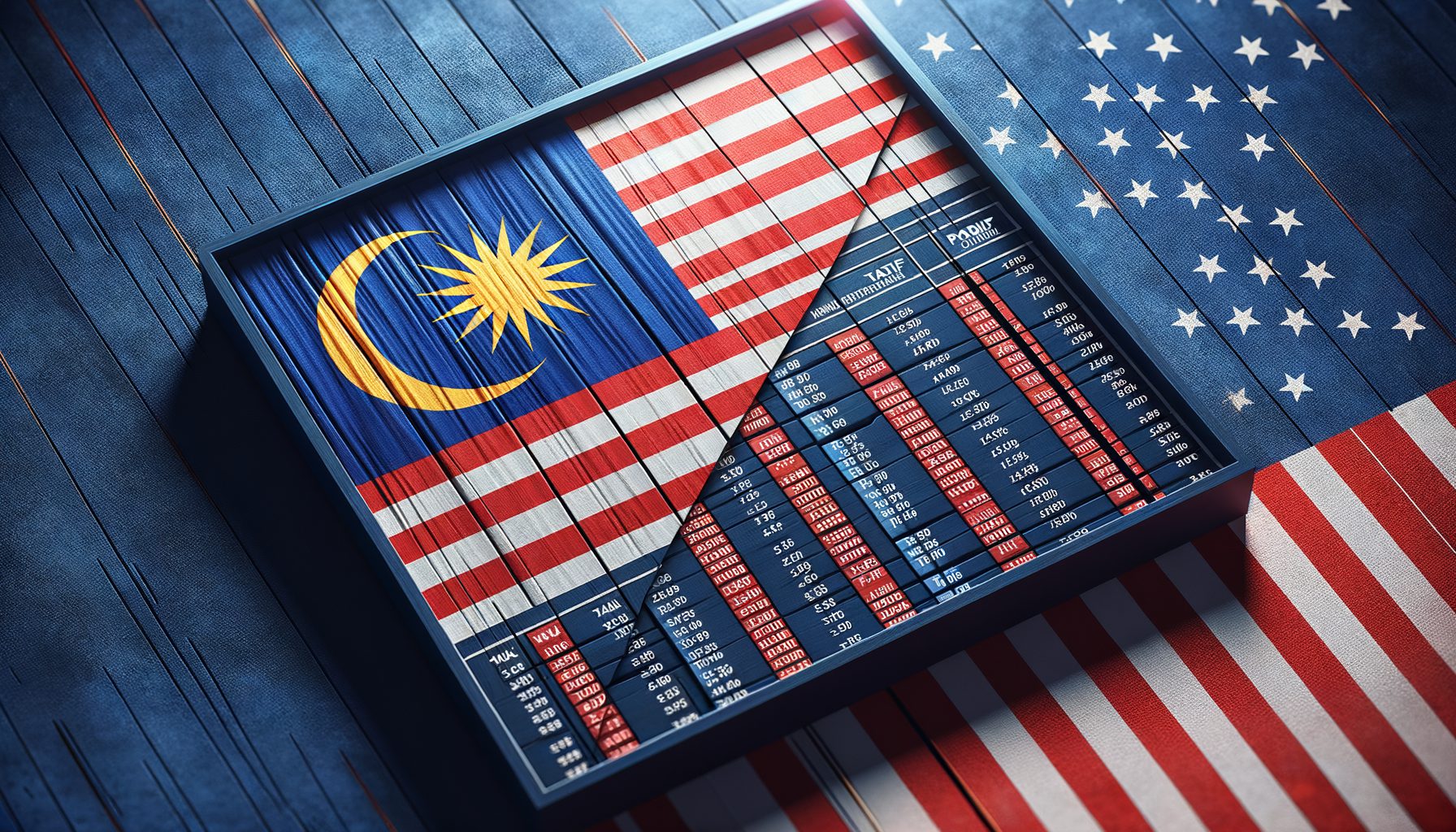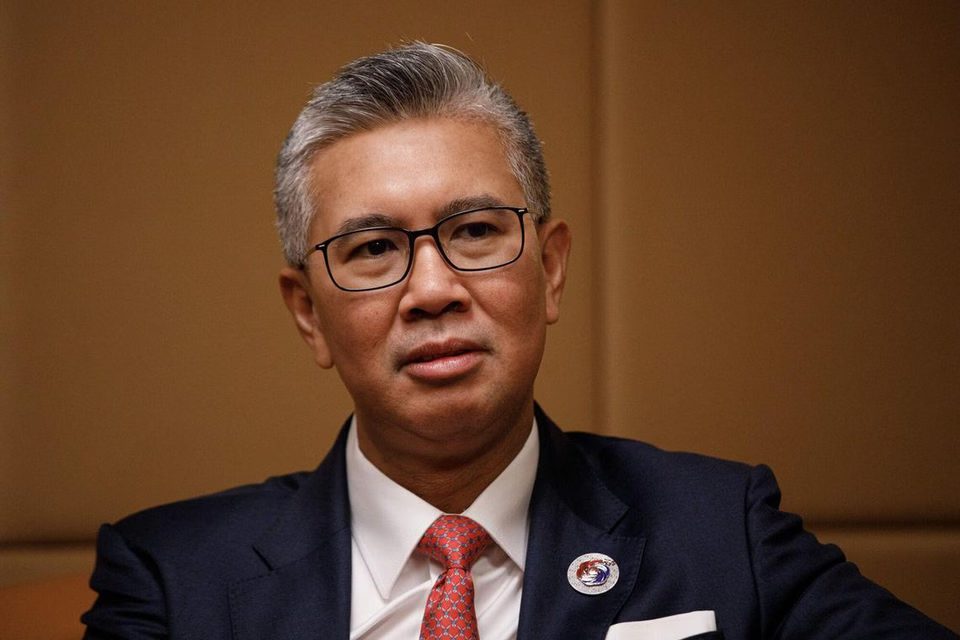Malaysia Says 10% US Tariff Floor Is Acceptable as Zero Becomes Unlikely

Malaysia has accepted that a 10% US tariff represents the minimum they can expect, and officials now admit that zero tariffs are simply not going to happen. Investment Minister Tengku Zafrul Aziz confirmed this reality during recent talks, marking a significant shift in how the country approaches US import tariffs. This development also affects Malaysia’s trade policy across the region, as Southeast Asia tariffs could reach 49% for some sectors.
Also Read: US Tariffs to Drag Euro-Area Inflation to 1.7%, EU Forecast Reveals
Malaysia’s Tariff Position, US Trade Moves, And Global Ripple Effects

Malaysian officials have been forced to accept what many see as an inevitable outcome right now. Tengku Zafrul Aziz stated:
“To be fair, and the US has also been public about this, that the 10 percent is not negotiable – it seems to be the floor.”
The minister also emphasized how securing rates below the maximum proposals would benefit the country.
Tengku Zafrul Aziz said:
“Anything that can go below 24 percent, or at least 10 percent, would be good for our industries and for our exporters.”
At the time of writing, these negotiations represent a critical juncture for Malaysia’s economic future.
Trade Deficit Numbers Drive The Pressure
The pressure behind these US import tariffs stems from substantial trade imbalances that have been building up over recent years. The US ran a goods trade deficit with Malaysia that hit $24.8 billion in 2024, according to data from the Office of the US Trade Representative. This deficit has become a central focus for Trump administration officials.
Also Read: Temu Halts Shipping Products From China to US: Cites Tariffs
Malaysian concessions extend well beyond just accepting higher tariff floors, and the Trump administration has been pushing for comprehensive changes to Malaysia’s trade policy. The US wants the country to address trade imbalances, non-tariff barriers, and also implement stronger safeguards for US technology transfers.
Regional Stakes And Win-Win Solutions
Southeast Asia tariffs threaten multiple countries across the region, with officials working to secure deals before a 90-day negotiation window closes. Malaysian negotiators are set to return to discussions next week, and the outcomes will likely influence how other countries approach similar situations.
Tengku Zafrul Aziz stated:
“What’s important for us is to try and come to a win-win solution.”
The minister highlighted just how crucial these US relationships are, noting that America serves as Malaysia’s largest export market and also its biggest investor. This makes successful negotiations around the Malaysia 10% US tariff essential for maintaining economic stability.
Compliance Measures And Technology Controls
Malaysia has been implementing stricter oversight mechanisms to address US concerns about semiconductor trans-shipment to China. The Investment Ministry became the sole issuer of non-preferential certificates of origin for US shipments, effective May 6.
Trump officials pressured Malaysian authorities regarding what Washington characterized as semiconductor trans-shipment activities. These measures demonstrate Malaysia’s commitment to compliance while maintaining its position as a regional manufacturing hub.
Tengku Zafrul Aziz had this to say:
“The process so far has been quite smooth. We have increased the capacity and resources to ensure that we do not have bottlenecks for the exporters to export to the US.”
Also Read: Goldman Says China to Hit 4.6% Growth After 90-Day Tariff Pause
The pragmatism of Malaysia occurs along with its other diversifying activities and the country commenced free trade negotiations with the Gulf Cooperation Council to lessen reliance on sole trading partners. Other Southeast Asian leaders have been actively pursuing stronger relations with China and countries in the Gulf to lessen the impact of possible tariff retaliations.
This method of doing things helps to alleviate conflicting constraints that need to be addressed simultaneously while keeping growth opportunities open. Realistically, Malaysian officials understand that the offering of accepting minimum tariffs will set some bounds for other regional neighbors succumbing to US demands also.
Read More

Bitcoin Dumps 2.8% to Below $110K After Trump’s 50% India Tariff Over Russian Oil
Malaysia Says 10% US Tariff Floor Is Acceptable as Zero Becomes Unlikely

Malaysia has accepted that a 10% US tariff represents the minimum they can expect, and officials now admit that zero tariffs are simply not going to happen. Investment Minister Tengku Zafrul Aziz confirmed this reality during recent talks, marking a significant shift in how the country approaches US import tariffs. This development also affects Malaysia’s trade policy across the region, as Southeast Asia tariffs could reach 49% for some sectors.
Also Read: US Tariffs to Drag Euro-Area Inflation to 1.7%, EU Forecast Reveals
Malaysia’s Tariff Position, US Trade Moves, And Global Ripple Effects

Malaysian officials have been forced to accept what many see as an inevitable outcome right now. Tengku Zafrul Aziz stated:
“To be fair, and the US has also been public about this, that the 10 percent is not negotiable – it seems to be the floor.”
The minister also emphasized how securing rates below the maximum proposals would benefit the country.
Tengku Zafrul Aziz said:
“Anything that can go below 24 percent, or at least 10 percent, would be good for our industries and for our exporters.”
At the time of writing, these negotiations represent a critical juncture for Malaysia’s economic future.
Trade Deficit Numbers Drive The Pressure
The pressure behind these US import tariffs stems from substantial trade imbalances that have been building up over recent years. The US ran a goods trade deficit with Malaysia that hit $24.8 billion in 2024, according to data from the Office of the US Trade Representative. This deficit has become a central focus for Trump administration officials.
Also Read: Temu Halts Shipping Products From China to US: Cites Tariffs
Malaysian concessions extend well beyond just accepting higher tariff floors, and the Trump administration has been pushing for comprehensive changes to Malaysia’s trade policy. The US wants the country to address trade imbalances, non-tariff barriers, and also implement stronger safeguards for US technology transfers.
Regional Stakes And Win-Win Solutions
Southeast Asia tariffs threaten multiple countries across the region, with officials working to secure deals before a 90-day negotiation window closes. Malaysian negotiators are set to return to discussions next week, and the outcomes will likely influence how other countries approach similar situations.
Tengku Zafrul Aziz stated:
“What’s important for us is to try and come to a win-win solution.”
The minister highlighted just how crucial these US relationships are, noting that America serves as Malaysia’s largest export market and also its biggest investor. This makes successful negotiations around the Malaysia 10% US tariff essential for maintaining economic stability.
Compliance Measures And Technology Controls
Malaysia has been implementing stricter oversight mechanisms to address US concerns about semiconductor trans-shipment to China. The Investment Ministry became the sole issuer of non-preferential certificates of origin for US shipments, effective May 6.
Trump officials pressured Malaysian authorities regarding what Washington characterized as semiconductor trans-shipment activities. These measures demonstrate Malaysia’s commitment to compliance while maintaining its position as a regional manufacturing hub.
Tengku Zafrul Aziz had this to say:
“The process so far has been quite smooth. We have increased the capacity and resources to ensure that we do not have bottlenecks for the exporters to export to the US.”
Also Read: Goldman Says China to Hit 4.6% Growth After 90-Day Tariff Pause
The pragmatism of Malaysia occurs along with its other diversifying activities and the country commenced free trade negotiations with the Gulf Cooperation Council to lessen reliance on sole trading partners. Other Southeast Asian leaders have been actively pursuing stronger relations with China and countries in the Gulf to lessen the impact of possible tariff retaliations.
This method of doing things helps to alleviate conflicting constraints that need to be addressed simultaneously while keeping growth opportunities open. Realistically, Malaysian officials understand that the offering of accepting minimum tariffs will set some bounds for other regional neighbors succumbing to US demands also.
Read More

